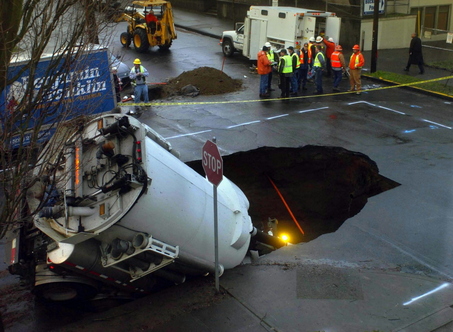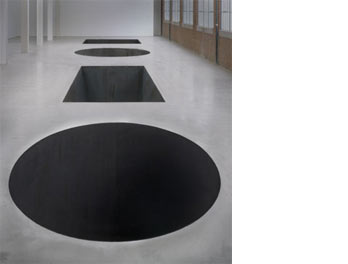(Based on a Note that I posted earlier today on Facebook)
Today my graduate seminar students (at Parsons Fine Arts MFA) and I had a great discussion leading from Robert Smithson’s writings on entropy to issues of pessimism about social change and what might be the point of human intervention towards ideals of progressive social activism in an entropically irreversible situation: interesting in this light to read Bob Herbert Op-Ed piece in today’s (October 26, 2010) New York Times, “The Corrosion of America”: do we just go along “haplessly”/hopelessly with the flow of entropy and the corrosion and ruin of our infrastructure (a ruin which is in a sense “always already” from before its inception, in Smithson’s example of “The Monuments of Passaic”) creating or suggesting an art which does not try to impose an idealist order or moral value to an entropic situation of urban and suburban decay, or do we believe enough in human labor despite ultimate futility or mortality to make the investment in our near futures by fixing the infrastructure? Translate that to art: “Perhaps it’s done already, perhaps they have said me already, perhaps they have carried me to the threshold of my story, before the door that opens on my story, that would surprise me, if it opens, it will be I, it will be the silence, where I am, I don’t know, I’ll never know, in the silence you don’t know, you must go on, I can’t go on, I’ll go on.” (Samuel Beckett, The Unnamable, 1954)

Sinkhole, Portland, Oregon, 2006, image illustrating "America is Falling Apart," by Michael Walden on http://www.oregonlive.com/politics/index.ssf/2008/06/part_one_america_is_falling_ap.html June 29, 2008

Michael Heizer, North, East, South, West, 1967/2002. Dia Art Foundation; gift of Lannan Foundation. Photo: Tom Vinetz. from DIA Beacon website
Robert Smithson, Gravel Mirrors with Cracks and Dust, 1968. Lannan Foundation; long-term loan. Photo: Florian Holzherr. DIA Beacon website
Some excerpts from Smithson:
“A Utopia minus a bottom, a place where the machines are idle, and the sun has turned to glass, and a place where the Passaic Concrete Plant (253 River Drive) does a good business in STONE, BITUMINOUS, SAND, and CEMENT. Passaic seems full of “holes” compared to New York City, which seems tightly packed and solid, and those holes in a sense are the monumental vacancies that define, without trying, the memory-traces of an abandoned set of futures.” (from “A Tour of the Monuments of Passaic, New Jersey” 1967)
“…the entropic devil is more Manichean in that you really can’t tell the good from the bad, there’s no clear cut distinction.” (from “Entropy Made Visible” (1973): Interview with Alison Sky)
For further reading:
Essays and interviews can be found in the book: Robert Smithson: The Collected Writings, edited by Jack Flam, University of California Press, Berkeley and Los Angeles, California; University of California Press,Ltd., London, England, 1996
Yve-Alain Bois and Rosalind Krauss, “Entropy,” Formless: A User’s Guide, New York City: Zone Books and, MIT Press, 1997 (see aaaaarg.org to download PDF of this out of print book as well as of Smithson’s essay, “A Tour of the Monuments of Passaic, New Jersey,” originally published as “The Monuments of Passaic,” Artforum, December 1967. FYI you have to register for aaaaarg.org but it’s free and an amazing research and teaching resource).
& Thank you to a new Facebook friend just brought to my attention Rudolf Arnheim’s essay Entropy and Art: An Essay on Disorder and Order
Since this discussion is in the context of next week mid-term elections of which one theme is apathy towards political activism, see also my recent Huffington Post piece, “Lowering the Bar on Activism”
